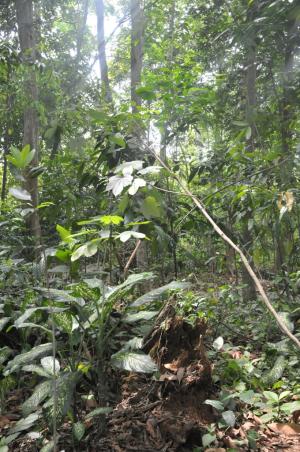Pakar Hutan IPB Mengudara di RRI Saturday, June 21, 2014

The greenness of a city does not only make it beautiful, healthy, fresh, and comfortable, but from the aspect of sustainability, harmony and environmental balance, a green city will be freed from the pollution and noise, resulting in healthy and intelligent citizens. This was recently conveyed by Dr. Endes N Dachlan, a lecturer of the Department of Forest Resources Conservation and Ecotourism, Faculty of Forestry, in the Dialogue expert at RRI (Radio of Republic of Indonesia) in Bogor.
The increasing urban development such as road construction, transportation, industries, residential and other activities often result in a decreased green open space (RTH) often also accompanied by a decline in environmental quality. This will make the city ill, contaminated and dirty. In such a sad condition, government officials may no longer be able to think clearly, futuristically, intelligently, strategically, sharply and focused, so their capacity of solving complex problems will weaken.
Secondary school students and college students of the sick and polluted city develops the characteristics that lead to a brutal temper with poor thinking capacity because during the way to and back home from school, many are contaminated by pollutants such gases as CO and heavy metals such as Pb emitted by motor vehicles.
Artists and athletes can not even perform their full potential. Polluted conditions, noise and heat will disrupt and degrade the quality of their performances and achievements. Furthermore, Dr. Endes explains, city development more often reflects the physical development largely determined by that of facilities and infrastructure. The urban development has the tendency to minimize the green open spaces and also the disappearance of the natural face. A lot of farming lands are converted into shopping, residential, recreational, industrial areas and others.
It turns out that the increasing less harmonious relationship between man and nature, especially trees and forest has made cities and urban areas only economically developed but ecologically backward. However, the ecological stability of a city is very important, as important as the economic stability. As the result of disrupted ecosystem stability of the city and urban area, nature shows its reaction such as warmer air temperature at the center of the city, the declined ground water level, flooding, subsidence, sea water intrusion, coastal erosion, water pollution of heavy metals or detergents, air pollution such as increased levels of CO, ozone, oxides of nitrogen and sulfur, dust, arid and monotonous atmosphere, noise and dirt.
Therefore, Dr. Endes emphasizes that urban development should be well designed, and its ecological quality must be considered because it is as important as the economic development. One aspect to note is the quality and extent of green open space (RTH) and the urban forest. History states that royal gardens, home gardens of wealthy merchants, and the squares with a beautiful banyan tree are the reflection of human life since ancient times. Our predecessors were already very familiar with the trees and really needed plants. This is evident from the rice and cotton in the state emblem of Garuda Pancasila. However, with the progress of time and the increasing standard of living, from 1950's to 1970's a lot of green open space had changed in their use to residential, airport, industrial, roads, shopping buildings and others. In fact, Law No. 26/2007 has required that the development of cities apply a minimum of 30% green open space (RTH) and it is reinforced by Government Regulation No. 63/2002 that requires the city forest area of at least 10% of the city area. (Mtd)



